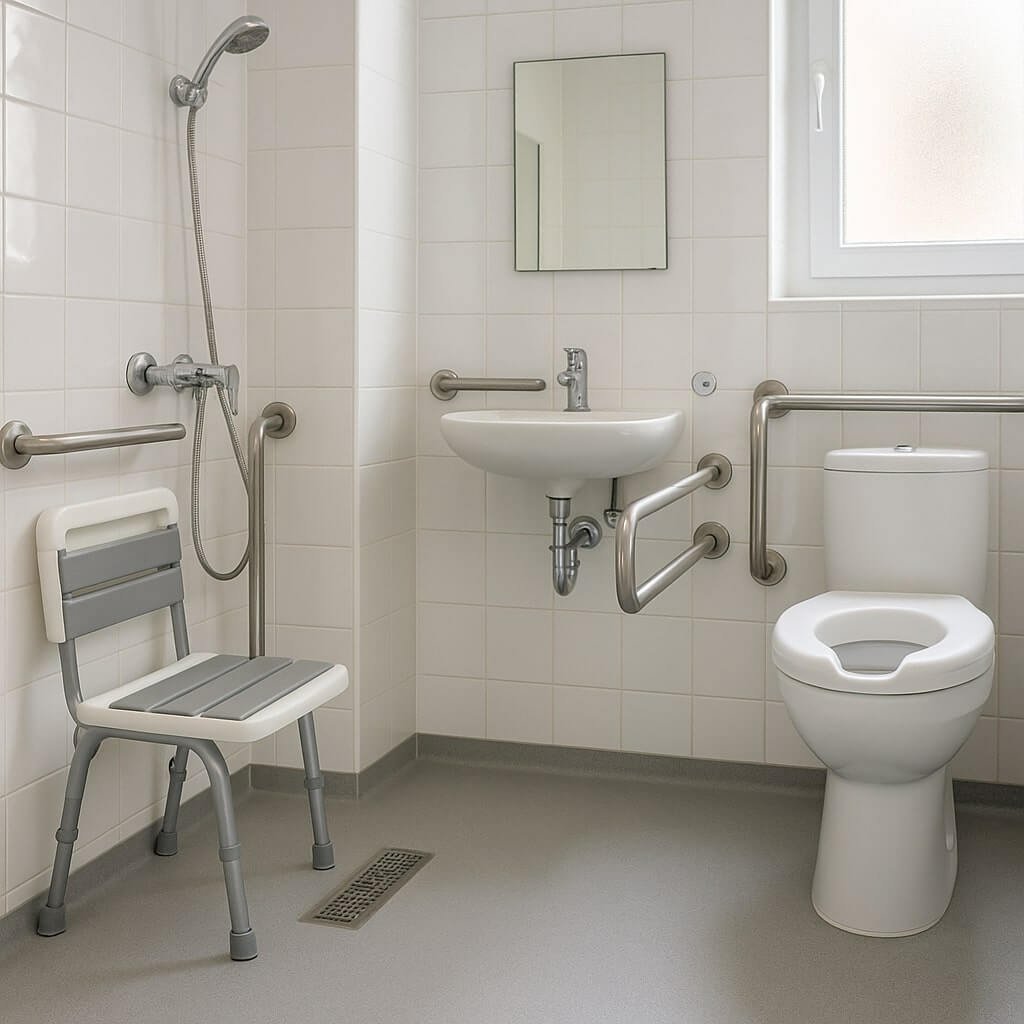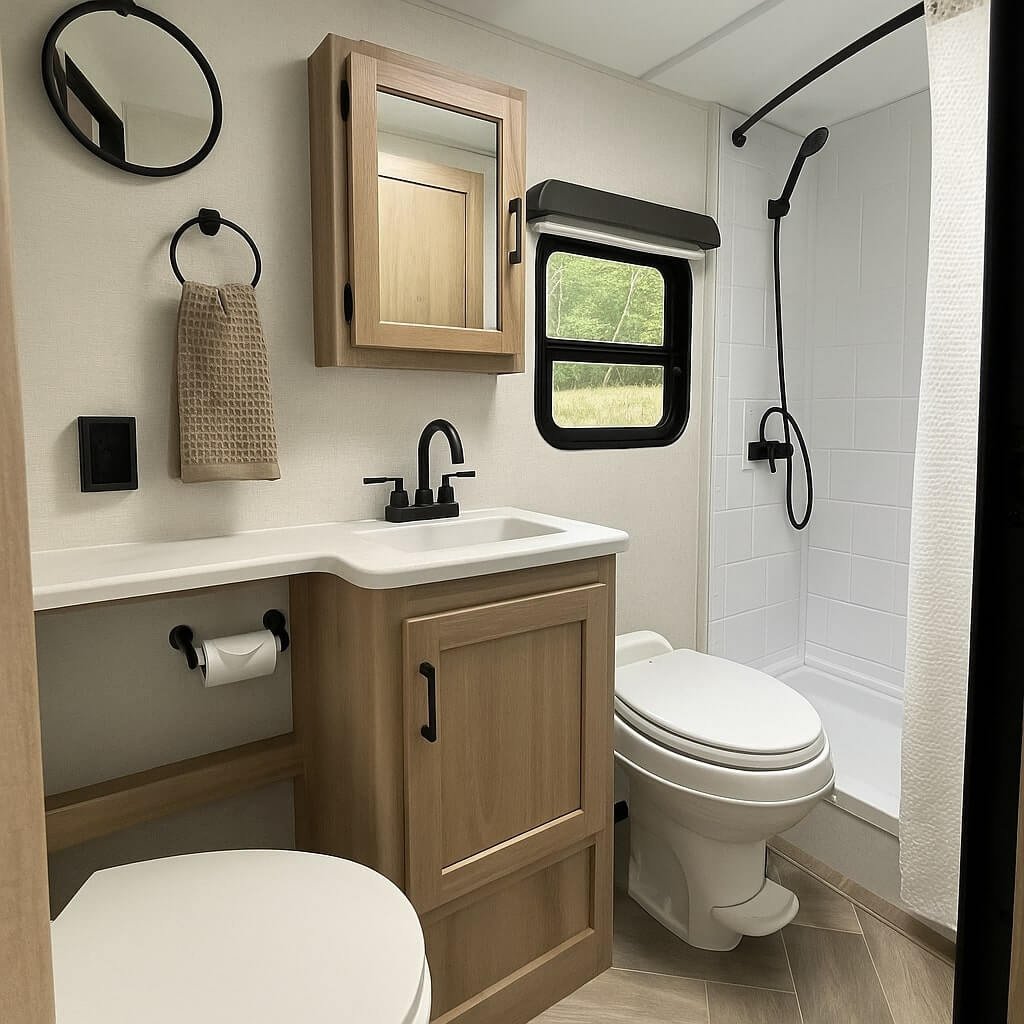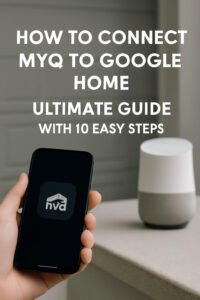If you’re considering bathroom modifications for safety and accessibility, you might wonder whether Medicaid can help cover the costs. The answer isn’t straightforward, as coverage can vary greatly by state and individual needs. Understanding your eligibility, the types of modifications that may be funded, and the process to request them is vital. What steps do you need to take to navigate this complex system successfully?
Key Takeaways
- Medicaid may cover bathroom modifications for safety and accessibility, but coverage varies by state and individual circumstances.
- Key modifications include grab bars, roll-in showers, and accessible toilets, depending on state guidelines.
- To request modifications, assess needs, consult a healthcare provider, and complete necessary Medicaid forms with supporting documentation.
- Required documentation often includes medical necessity statements, contractor quotes, and photographs of the current bathroom setup.
- Utilizing local agencies and support resources can help navigate the Medicaid modification process effectively.
Understanding Medicaid and Its Purpose
Although Medicaid is often perceived as a safety net for the most vulnerable populations, it serves a critical role in the broader healthcare system by providing essential medical coverage to millions of low-income individuals and families.
You may not realize that Medicaid benefits extend beyond basic healthcare; they include various services aimed at improving health outcomes. These Medicaid services encompass preventive care, hospitalization, and long-term care, ensuring that individuals receive necessary treatments.
Eligibility Criteria for Medicaid Coverage
To qualify for Medicaid coverage, individuals must meet specific eligibility criteria that vary by state, which can include income level, family size, and disability status.
Generally, Medicaid eligibility requires you to have an income below a certain threshold, often linked to the federal poverty level. Depending on the state, you may also need to demonstrate a medical need or disability.
Additionally, some states have asset limits that affect your eligibility. Understanding these coverage requirements is essential, as they determine whether you can receive financial assistance for modifications, including potentially necessary bathroom adjustments for improved accessibility.
Types of Bathroom Modifications Covered
When considering bathroom modifications covered by Medicaid, it’s vital to focus on key features like grab bars and shower accessibility enhancements.
Grab bars provide critical support, reducing the risk of falls, while shower accessibility modifications guarantee safer, easier entry and exit.
Understanding these options can help you effectively navigate your needs and Medicaid’s coverage policies.
Grab Bars Installation
As you navigate the process of bathroom modifications covered by Medicaid, understanding the importance of grab bars installation becomes essential for enhancing safety and accessibility. Grab bars provide critical support, reducing fall risks in the bathroom. Medicaid typically covers the installation process if it’s deemed medically necessary.
| Type of Grab Bar | Material | Typical Location |
|---|---|---|
| Straight Grab Bar | Stainless Steel | Next to toilet |
| L-Shaped Grab Bar | Plastic | Inside shower stall |
| Folding Grab Bar | Aluminum | Next to tub |
| Corner Grab Bar | Rubberized | In shower corner |
| Suction Cup Grab Bar | Plastic | Temporary installation |
Shower Accessibility Enhancements
While enhancing shower accessibility is vital for safety and independence, understanding the types of bathroom modifications covered by Medicaid can streamline the process.
Medicaid may cover various shower accessibility enhancements, including the installation of roll-in showers, adjustable showerheads, and non-slip flooring. These modifications improve shower safety by minimizing fall risks and accommodating mobility aids.
Additionally, grab bars and shower seats can be included under accessibility features, making the showering experience safer and more comfortable.
To guarantee coverage, it’s imperative to work with healthcare providers and document specific needs, aligning modifications with Medicaid guidelines for bathroom enhancements.
The Process for Requesting Modifications
To effectively request bathroom modifications through Medicaid, you’ll need to follow a structured process that involves several key steps.
Adhering to the modification process and request guidelines guarantees a smoother experience. Here’s how to proceed:
Following the modification process and guidelines ensures a more seamless experience for your bathroom modification request.
- Assess your specific needs for bathroom modifications.
- Consult with a healthcare provider to obtain a recommendation.
- Complete the necessary Medicaid forms to initiate your request.
- Submit your request along with any required supporting documentation.
- Follow up with your Medicaid office to track the status of your request.
Documentation and Evidence Needed for Approval
Gathering the right documentation and evidence is essential for securing approval for bathroom modifications through Medicaid. You must meet specific documentation requirements to guarantee a successful evidence submission. This includes medical necessity statements, detailed quotes from contractors, and photographs of the current bathroom setup. Below is a table outlining the necessary documents:
| Document Type | Description | Importance |
|---|---|---|
| Medical Necessity | Statement from a healthcare provider | Justifies the need |
| Contractor Quote | Itemized estimate for modifications | Provides cost overview |
| Photos | Current bathroom condition | Visual evidence of need |
| Floor Plan | Proposed layout of modifications | Demonstrates accessibility |
| Care Plan | Overall support strategy for the patient | Context for modifications |
Alternative Funding Options for Bathroom Modifications
When considering bathroom modifications, exploring alternative funding options can greatly ease the financial burden.
Nonprofit grants, state assistance programs, and private insurance options each offer unique avenues for support.
Understanding these resources allows you to make informed decisions about financing your necessary modifications.
Nonprofit Grants Availability
While managing the challenge of funding bathroom modifications, exploring nonprofit grants can provide valuable alternative options. Nonprofit funding often comes with specific criteria, so it’s essential to research potential grants thoroughly.
When considering grant applications, keep these points in mind:
- Identify nonprofits focused on disability support or home modifications.
- Review eligibility requirements carefully.
- Prepare a compelling narrative about your needs.
- Include detailed project budgets and timelines.
- Follow application guidelines closely to avoid disqualification.
State Assistance Programs
State assistance programs can be an essential resource for funding bathroom modifications, helping individuals with disabilities or specific health needs achieve greater independence and safety in their homes.
Many states offer funding through local programs designed specifically for home modifications. These initiatives vary by state but typically include grants or low-interest loans aimed at improving accessibility.
Private Insurance Options
Although many individuals primarily regard government assistance for funding bathroom modifications, private insurance can also play an essential role in covering these costs.
Exploring your coverage options is crucial to maximize benefits. Here are key points to keep in mind:
- Review your policy’s specific benefits and exclusions.
- Contact your insurance provider for clarification on coverage.
- Obtain a prescription or letter of medical necessity from your doctor.
- Keep detailed records of all expenses related to modifications.
- Investigate potential reimbursement processes for home improvements.
Understanding these factors can help you leverage private insurance effectively for your bathroom modification needs.
Resources for Assistance and Guidance
How can you navigate the complex landscape of resources available for bathroom modifications under Medicaid?
Start by contacting local resource centers that specialize in Medicaid services; they often provide tailored information about eligibility and coverage.
Additionally, guidance hotlines can connect you with experts who understand your specific needs and local regulations.
Connect with guidance hotlines for expert advice tailored to your needs and local regulations.
These resources can help clarify what modifications are covered, assist with documentation, and guide you through the application process.
Utilizing these support systems guarantees you stay informed and empowered as you pursue necessary changes to enhance safety and accessibility in your bathroom.
Conclusion
In summary, Medicaid can cover essential bathroom modifications if you meet specific eligibility criteria and demonstrate medical necessity. By understanding your state’s guidelines and following the proper request process, you can greatly enhance safety and accessibility in your home. Be sure to gather all necessary documentation and consult with healthcare providers to strengthen your case. If Medicaid coverage isn’t an option, explore alternative funding resources to guarantee you achieve the modifications you need for a safer living environment.













